The PC gaming hardware we’re looking forward to in 2022
New year, new toys

If we’re talking wishlists for 2022, “a sense of goddamn normalcy” has got to be up there. In all likelihood, though, that’s not going to happen, so instead let’s put our chins in our palms, angle our heads slightly and gaze off into the sky while picturing all the neat PC hardware that’s launching this year.
From ambitious inventions like the Steam Deck to such long-expected updates as the AMD Ryzen 7000 series, 2022 has the potential to be a vintage year for PC gaming kit. Granted, there are risks too: global pandemics evidently aren’t ideal for electronics production, and much of this upcoming gear could easily be misappropriated for nefarious means, like peddling ugly drawings of chimps. The horror!
Nevertheless, I reckon there’s more to look forward to than to fret about, and at least one big move from Intel in particular could change the face of gaming graphics cards as we know it. Here’s all the biggest PC hardware to look out for in 2022.

Steam Deck
The Steam Deck’s originally planned December launch may have been delayed, but considering most pre-orders weren’t on track to be fulfilled until 2022 anyway, it doesn’t feel like Valve’s portable PC has had a particularly interminable wait. What’s more, Valve have been making good use of the time, whether it’s by working to help get major Steam games compatible with the Linux-based OS or making it clear to potential users which games will work and which won’t.
If Valve do succeed at squeezing fair performance out of Steam’s extensive library, AAA games and all, it’s easy to see the Steam Deck take handheld PCs from no-name-brand curios to something at least approaching the mainstream. It’s exciting and distinct in a way that previous Valve hardware efforts weren’t, and it helps that with prices starting at £349 / $399, it could be a genuine budget PC option at a time when Nvidia and AMD have largely abandoned entry-level hardware.
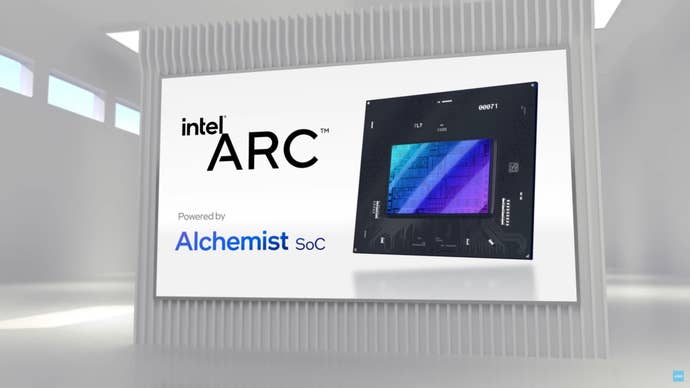
Intel Arc graphics cards
Intel getting back into dedicated graphics, with a charge into gaming GPUs specifically, could be a Very Big Deal indeed. Besides challenging the settled Nvidia/AMD duopoly, any new supply of graphics cards – in the current climate of endless shortages and borderline insulting price hikes – is going to be a welcome one.
But what of the GPUs themselves? We don’t know that much about Alchemist, the first line of Intel Arc models, though they’re definitely coming soon. Word from Intel themselves, out of CES 2022, is that Alchemist GPUs have already started shipping to OEMs for inclusion in upcoming laptops and pre-built desktops. You’ll be able to get them separately too, of course – “Q1 2022” is the timeframe for a full launch.
The Arc/Alchemist GPUs will also herald another bit of interesting tech, XeSS: Intel’s answer to Nvidia DLSS. Like DLSS, XeSS aims to make your games run smoother by having them render at a lower resolution before upscaling the image to fit your monitor’s native resolution, and has similar machine learning integration too – so it could improve both image quality and performance even further over time. XeSS is also open source, so while it could perform best on Arc GPUs, it will work on AMD and Nvidia cards too…provided XeSS is actually supported by the game in question.
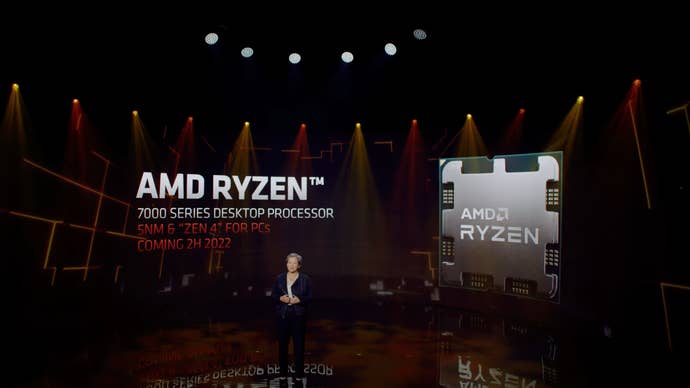
AMD Ryzen 7000 CPUs
Intel’s 12th Gen Alder Lake CPUs have proven themselves the blue team’s biggest step forward in years, introducing a clever hybrid architecture and support for multiple next-gen expansion and storage standards. Even on the simplest of performance terms, they’ve supplanted Ryzen chips as the best CPUs for gaming, so you can probably expect a spirited response when AMD launch the Ryzen 7000 series in the second half of 2022.
CEO Dr Lisa Su confirmed the new chips are on track to release this year at CES 2022, following announcements for various Ryzen 6000 APUs and mobile processors. But it’s the more enigmatic Ryzen 7000 series that you should keep an eye on for serious gaming builds, especially if you want to futureproof your rig with PCIe 5.0 and DDR5 memory support. Both upgrades that Alder Lake just introduced on the Intel side, incidentally.
We’ll have to wait and see whether 7000 series’ Zen 3+ architecture can push the performance gains needed to re-overtake Alder Lake, though one thing is for sure: you’ll need a new motherboard for it, as AMD is finally retiring the AM4 socket in favour of AM5. This is better news than it sounds, as it means – at last – the 7000 series chips won’t have those delicate, easily-bent pins on the underside. Hopefully it has a more robust locking mechanism as well – despite it never actually happening, the little sideways slide of the AM4 socket always makes me feel like I’m about to shear off all those pins. Like karate-chopping dried spaghetti.
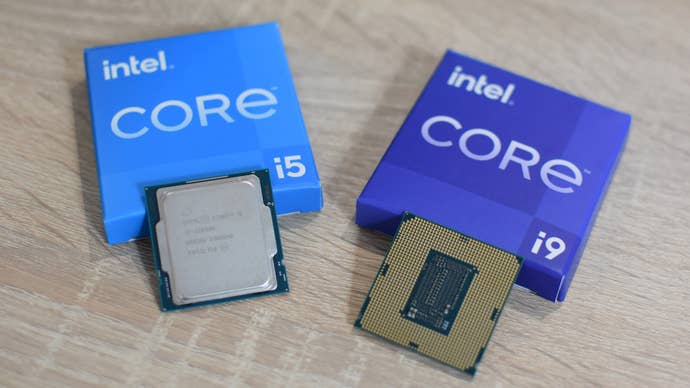
More Intel 12th Gen CPUs (and more new chipsets)
While we wait for AMD’s new chips, Intel is still rolling out the rest of its 12th Gen CPU lineup; the initial launch last November covered on a fraction, focusing entirely on overclockable, higher-specced parts. Now you’ll be able to choose from a much wider selection, including Core i3 and more affordable Core i5 models. There’s a new family of 12th Gen laptop chips, too.
The catch? Whereas a big appeal of Alder Lake is how it combines fast P-cores (P for Performance) with smaller E-cores (E for Efficiency), most of the newer desktop chips only feature P-cores. The E-cores, which would otherwise be useful for offloading background tasks while leaving the P-cores free to focus on your games, are often omitted outright. Still, given these chips are meant to be cheaper alternatives to the initial batch, something had to give. And from a gaming standpoint, it probably is better to keep the P-cores intact, as the E-cores are only fully exploited in a minority of heavily multithreaded games.
Intel has also confirmed the launch of three additional motherboard chipsets, granting more lower-cost alternatives to the flagship Z690 chipset that Alder Lake launched with. The H670, B660 and H610 chipsets all lack CPU overclocking support, but that’s a basically non-issue if your CPU is locked anyway. The H670 and B660 chipsets also provide extra PCIe 4.0 lanes and memory overclocking, while all three are equipped for integrated Wi-Fi 6E.
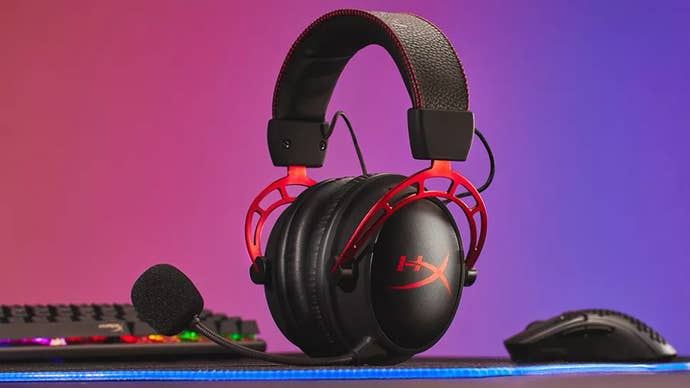
HyperX Cloud Alpha Wireless
Not that it will change the world or anything, but the Cloud Alpha Wireless is the first gaming headset to make me literally vocalise an “Ooooh” sound when I saw it. And if HyperX’s newest headset can come anywhere close to its purported 300 hours of battery life, it will deserve much more than pantomime mouth noises.
Again, that’s three hundred hours. A three with two zeroes after it! With most wireless gaming cans you’re lucky to get more than 25, and yet here’s one you could use for hours every day and would still only need to charge once per season. HyperX have said it’s not that much heavier than the wired Cloud Alpha, either: 322g to the original’s 298g.
So far the only downsides appear to be a high price ($200, UK pricing TBC) and a lack of Bluetooth support, as the Cloud Alpha Wireless can only connect to its included Wi-Fi USB dongle. Even so, the near-elimination of the need to worry about charging, while keeping all the benefits of wirelessness, makes this one seriously enticing peripheral. It's out in February, and I'll be testing one to see if it's worthy of our best gaming headsets list.
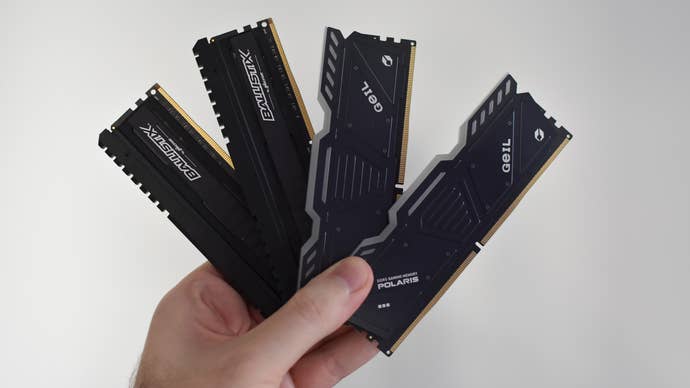
Better DDR5 RAM, maybe
This is more of a hope than something confirmed to exist, let alone something that’s definitely due this year. But considering we’ll end 2022 with both Intel 12th Gen and AMD Ryzen 7000 CPUs ready to partner with DDR5 memory, could that memory perhaps become a little…better?
By that, I don’t just mean faster – the DDR5 that’s launched so far already has data rates that humble DDR4, and its clock frequencies can be overclocked to higher peaks as well. The problem is that DDR5 latency is higher too, which for gaming means DDR5 is more expensive than DDR4 in exchange for no meaningful performance benefit. Funnily enough, this mirrors the latency problems that early DDR4 kits had when compared to DDR3.
Because of that, there’s little doubt that DDR5 can eventually whittle down that latency delay until it can reliably outperform DDR4, just as the latter did against DDR3. But with any luck that will happen sooner rather than later, or else there’s going to be an awful lot of laptops and pre-built PCs that bet on the wrong memory horse.

